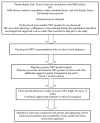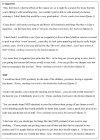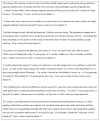Supporting Parents Living in Disadvantaged Areas of Edinburgh to Create a Smoke-Free Home Using Nicotine Replacement Therapy (NRT): A Two-Phase Qualitative Study
- PMID: 33036327
- PMCID: PMC7579591
- DOI: 10.3390/ijerph17197305
Supporting Parents Living in Disadvantaged Areas of Edinburgh to Create a Smoke-Free Home Using Nicotine Replacement Therapy (NRT): A Two-Phase Qualitative Study
Abstract
Exposure to second-hand smoke (SHS) in the home is largely associated with socio-economic disadvantage. Disadvantaged parents face specific challenges creating a smoke-free home, often caring for children in accommodation without access to outdoor garden space. Existing smoke-free home interventions largely fail to accommodate these constraints. Innovative approaches are required to address this inequality. In this two-phase study, we engaged with parents living in disadvantaged areas of Edinburgh, Scotland, to explore tailored approaches to creating a smoke-free home and develop and pilot-test an intervention based on their views and preferences. In Phase 1, qualitative interviews with 17 parents recruited from Early Years Centres explored alternative approaches to smoke-free home interventions. In Phase 2, an intervention based on parents' views and preferences was pilot-tested with parents recruited through Early Years and Family Nurse Partnership centres. Seventeen parents took part in an interview to share their views/experiences of the intervention. Data from both study phases were thematically analysed. Phase 1 findings suggested that parents associated nicotine replacement therapy (NRT) with quit attempts but supported the idea of NRT use for temporary abstinence to create a smoke-free home, viewing this as a safer option than using e-cigarettes indoors. In Phase 2, 54 parents expressed an interest in accessing NRT to create a smoke-free home, 32 discussed NRT product choice during a home visit from a smoking adviser, and 20 collected their free NRT prescription from the pharmacy. NRT was used for up to 12 weeks in the home, with ongoing advice available from pharmacy staff. During qualitative interviews (n = 17), parents self-reported successfully creating a smoke-free home, quitting smoking, and reduced cigarette consumption, often exceeding their expectations regarding changes made. The intervention was acceptable to parents, but the multi-step process used to access NRT was cumbersome. Some participants were lost to this process. Parents living in disadvantaged circumstances may benefit from access to NRT for temporary abstinence in the home to assist them to protect their children from SHS exposure. Further research using a more streamlined approach to NRT access is required to determine the feasibility and cost-effectiveness of this approach.
Keywords: child; nicotine-replacement therapy; parents; pharmacies; public health; qualitative research; smoke-free home; tobacco smoke pollution; vulnerable populations.
Conflict of interest statement
The authors declare no conflict of interest. The funders had no role in the design of the study; in the collection, analyses, or interpretation of data; in the writing of the manuscript, or in the decision to publish the results.
Figures



Similar articles
-
Stigma and Smoking in the Home: Parents' Accounts of Using Nicotine Replacement Therapy to Protect Their Children from Second-Hand Smoke.Int J Environ Res Public Health. 2020 Jun 17;17(12):4345. doi: 10.3390/ijerph17124345. Int J Environ Res Public Health. 2020. PMID: 32560517 Free PMC article.
-
Use of nicotine replacement therapy to reduce children's exposure to second-hand smoke in the home: a qualitative pilot study involving local community pharmacies.BMC Public Health. 2023 Dec 20;23(1):2545. doi: 10.1186/s12889-023-17488-5. BMC Public Health. 2023. PMID: 38124059 Free PMC article.
-
The role of nicotine replacement therapy for temporary abstinence in the home to protect children from environmental tobacco smoke exposure: a qualitative study with disadvantaged smokers.BMC Public Health. 2013 Mar 22;13:262. doi: 10.1186/1471-2458-13-262. BMC Public Health. 2013. PMID: 23521825 Free PMC article.
-
Factors influencing the uptake and use of nicotine replacement therapy and e-cigarettes in pregnant women who smoke: a qualitative evidence synthesis.Cochrane Database Syst Rev. 2020 May 22;5(5):CD013629. doi: 10.1002/14651858.CD013629. Cochrane Database Syst Rev. 2020. PMID: 32441810 Free PMC article.
-
[Smoking reduction and temporary abstinence: new approaches for smoking cessation].J Mal Vasc. 2003 Dec;28(5):293-300. J Mal Vasc. 2003. PMID: 14978435 Review. French.
Cited by
-
Stigma and Smoking in the Home: Parents' Accounts of Using Nicotine Replacement Therapy to Protect Their Children from Second-Hand Smoke.Int J Environ Res Public Health. 2020 Jun 17;17(12):4345. doi: 10.3390/ijerph17124345. Int J Environ Res Public Health. 2020. PMID: 32560517 Free PMC article.
-
Supporting migrant groups to reduce tobacco-related harms and create smoke-free family environments: Future priorities and research gaps.Tob Induc Dis. 2024 Jun 13;22. doi: 10.18332/tid/189356. eCollection 2024. Tob Induc Dis. 2024. PMID: 38873182 Free PMC article. No abstract available.
-
Use of nicotine replacement therapy to reduce children's exposure to second-hand smoke in the home: a qualitative pilot study involving local community pharmacies.BMC Public Health. 2023 Dec 20;23(1):2545. doi: 10.1186/s12889-023-17488-5. BMC Public Health. 2023. PMID: 38124059 Free PMC article.
References
-
- Royal College of Physicians of London. Tobacco Advisory Group . Royal College of Physicians Passive Smoking and Children: A Report. RCP; London, UK: 2010.
-
- US Surgeon General . The Health Consequences of Involuntary Exposure to Tobacco Smoke: A Report of Surgeon General. US DHHS; Atlanta, GA, USA: 2006. - PubMed
Publication types
MeSH terms
Substances
LinkOut - more resources
Full Text Sources
Medical

